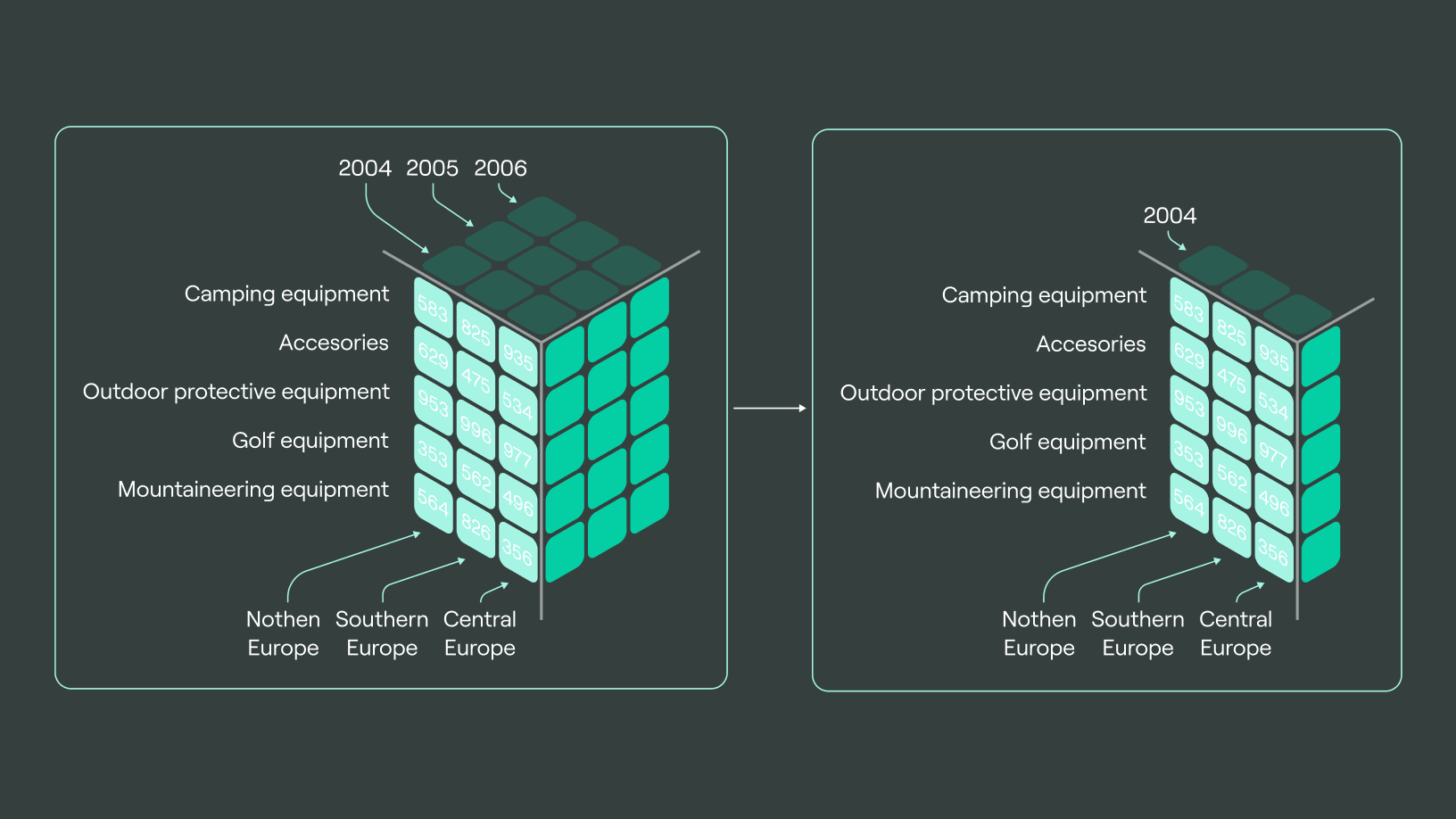
OLAP systems - Definition, characteristics & use cases
The key to any business success is in improving the decision-making process with the introduction of business intelligence; the quick and easy access to information that should be found in data warehouses with the potential for generating multi-dimensional queries.
Common functions of business intelligence technologies are: reporting, online analytical processing (OLAP), data search, discovery of knowledge in data (data mining), business performance management, benchmarking, text mining and predictive analytics.
In this article, we’ll describe the technology of interactive analytical processing — OLAP, which is a relatively young technology with great potential for application in the business environment of start-ups and small to medium-sized enterprises.
What does OLAP mean?
The concept of OLAP is based on the principle of rich data representation. In 1993, the term OLAP (online analytical processing) was introduced by Edgar Codd. Taking into account the shortcomings of relational models, he indicated the impossibility of connecting, viewing and analyzing data with respect to the multiplication abilities (which are required in corporate analytics). Thus he defined the general requirements for the OLAP system — increasing the functionality of relational DBMS and introducing multi-dimensional conceptual view.
In a large number of publications, the abbreviation OLAP stands for a rich data view and data preservation to compose a rich database. Codd declared that “relational databases are the most suitable technology” for collecting corporate data. There is no need for new DB technologies, but rather, to complement the basic DBMS functions with data transfer and automated data analyses.
OLAP system — functions & features
Together with the multidimensional conceptual view — the OLAP technology possesses the following features and functions:
- Slice and dice technique — slicing takes a single value from one of its dimensions and creates a subset in the cube (3-dimensional array of data). For example with the sales cube, we can slice out certain years in a new data cube. Dicing choses certain values of the multi-cube and results in a new sub-cube.

-
Intuitive data manipulation — means direct action on the data cell, without accessing menus or multiple actions. This caused a lot of resistance from OLAP tools manufacturers.
-
Using OLAP as an intermediate layer — emphasizes the usage of the OLAP engine as an intermediary between the data sources and the OLAP applications.
-
Background (batch), or interpreter access, by supporting the both variants — background access via the stage table and direct access to external data. Today, this is overcome by using a hybrid approach (hybrid OLAP, HOLAP).
-
OLAP analysis models, which include support for four analysis models that can be described as: parametric static reporting, “slicing and dicing” with data drilling, “what-if” and “goal seek” models.
-
Client-server architecture implies that the server component can support several different types of client applications.
-
Transparency — implies that the user receives all the necessary data, without the need to know where the data comes from. Direct data loading from multiple applications is supported.
-
Support for multiple users, i.e. concurrent multi-user access, while preserving data security and integrity
Benefits of OLAP
The main benefits of the OLAP systems are:
-
Providing visual information and analysis of results. The purpose of the OLAP system is to easily process the information and find the logical connection between the data and the obtained results. Thus, subjectivity of the analysis is reduced.
-
OLAP technology enables the users to access and analyze “ad-hoc” data, review information obtained through comparisons, analysis of past data and data derived from various “what-if” scenarios.
-
OLAP applications are used by analysts, managers who often require an overview of highly aggregated data, such as total sales of one production line of the company, or one region of the country, etc.
-
The OLAP database (or analytical DB) is subject to changes caused by multiple data sources, and provides a powerful analytical backend to many user applications.
-
In contrast to SQL queries, that work over the transactional database and which provide an answer to the DB inquiries, OLAP goes a step further in the sphere of “data meaning”, providing answers to questions of — whether assumptions that have been extracted from the database data are true.
-
OLAP also creates a series of hypothetical patterns and relationships between data and uses query systems — to confirm or disprove them.
-
Creating a Unified platform. For the stability of the OLAP system, it is possible to create a unified platform for all predictive analytics in the company.
Successful OLAP use cases
-
Financial sector applications — OLAP applications can be applied in different business domains in order to ease the planning, budgeting, analyses and financial reporting. With proper utilization of OLAP, powerful reports can be created. These reports, in turn, can be very helpful for organizations that want to achieve better efficiency and effectiveness.
A multidimensional database (MDDB) is responsible for executing all OLAP requests. Control panels (dashboards) provide visual representation of the most important information needed to achieve a company’s goals. This information is consolidated and displayed on one screen, so it is possible to easily monitor the status of the entire organization. -
Sales applications — Sales teams should primarily be focused on the revenue category, not the profit category. The main goal of applying OLAP reporting in the sales area is to align sales activities with the corporate goal of increasing profits.
The main problem when it comes to sales reporting is the time required to collect data, analyze, create and distribute reports. That time can be measured in hours, and often in days, however OLAP reports allow sales teams to quickly manipulate sales-related information. -
Marketing use case — OLAP reporting in the marketing sphere allows companies to view customers in the same way. Using a rich set of algorithms and search tools, users can obtain useful information such as buying habits, sales forecasts, key influencers, market movements and campaign effectiveness.
In this article, we’ll talk about:
Start your trial today



